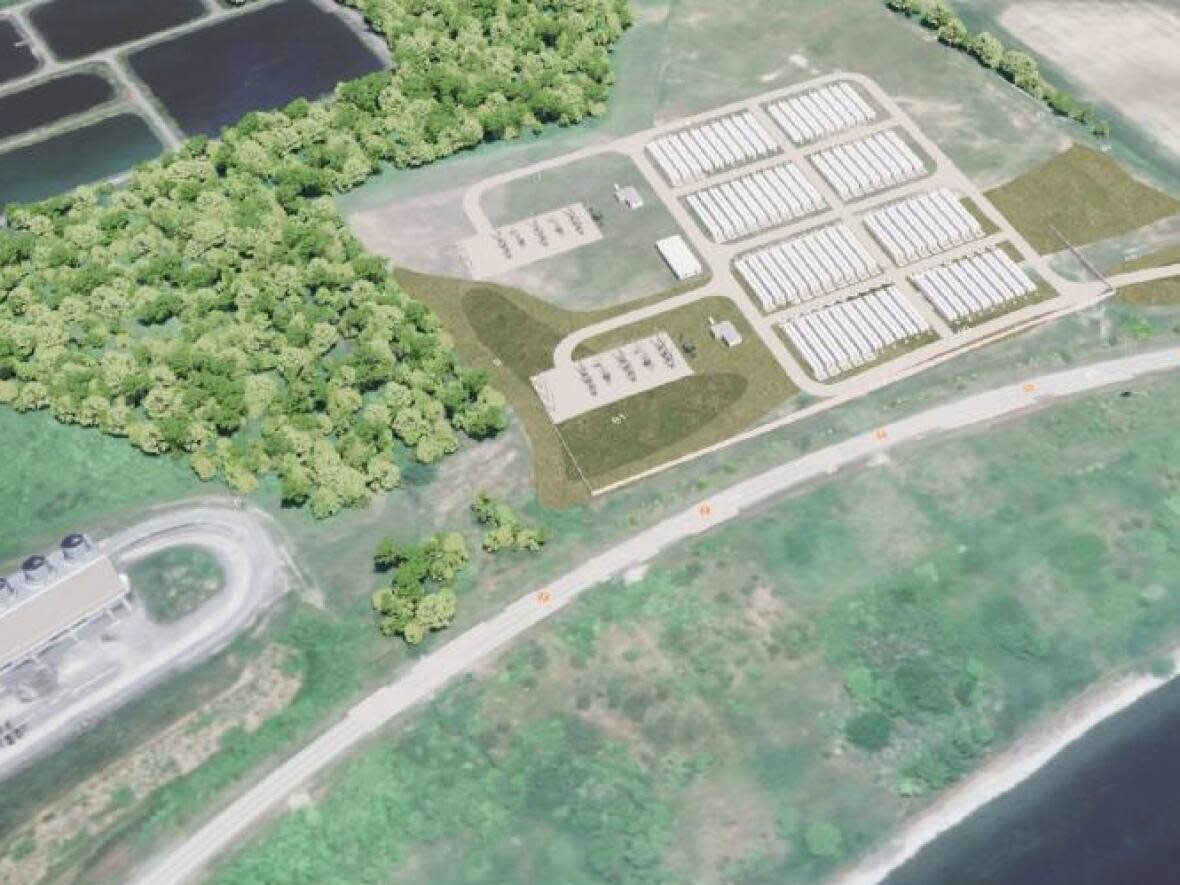Battery project planned for Napanee area would power 250K homes

Ontario is making its first big foray into storing electricity as a way to bolster the power grid, with a battery project on Lake Ontario near Napanee, Ont., among the first seven to get the go-ahead.
That 250-megawatt system would hold enough power to run about 250,000 homes for four hours, said Ontario Power Generation subsidiary Atura Power, which submitted that proposal.
It was one of seven successful bidders announced Tuesday by the Independent Electricity System Operator (IESO) in a first procurement round. The contracts would see battery storage systems built and attached to the grid and required to be up and running no later than the spring of 2026.
The IESO, which manages the province's electricity needs around the clock, is taking steps to avoid bumpy years ahead.
The closure of the Pickering Nuclear Generating Station looms in 2026. At the same time, the population is growing and transportation is quickly going electric — which means vehicles need charging.
It's been 20 years since the great blackout of 2003, and the electricity network has come a long way since then, said David Devereaux, the IESO's director of resource planning.
But the colliding trends of increased demand and retiring supply mean that Ontario needs extra electricity or will face shortfalls by the mid-2020s.
Moving into storage will be a "game changer," Devereaux said, because until now Ontario has produced electricity almost entirely at the moment it's needed.
"Batteries have come a long way in recent years," he explained. They can store energy generated at off-peak times and sometimes wasted — for instance, when water flows through a dam overnight — and be returned to the system when demand is high, he said.
Getting local buy-in
It was only last October that Energy Minister Todd Smith directed the IESO to make energy storage a big part of its latest procurement, representing a minimum of 1,500 megawatts.
That's about half the capacity of the Pickering nuclear plant.
Smith also made it clear that any project should have clear support from the local council and that the community would host the facility willingly.
After all, wind farms have seen their share of local opposition over the years.
Suddenly, councils from Windsor to Ottawa and many rural places in between began to see formal requests for resolutions supporting "battery energy storage systems" leading up to the IESO's bid deadline in February.

Like many of his municipal counterparts, Ottawa city councillor Clarke Kelly had never heard of the technology when a company called Abundant Solar Energy Inc. approached him in January about a project in his rural ward of West Carleton-March.
That proposal was for only 4.99 megawatts, on a tenth of a hectare on Upper Dwyer Hill Road near a solar facility.
Kelly said he likes the idea of storing up renewable energy when wind is blowing or the sun is shining, but his key concern is that prime farmland not be turned over.
"The reason I decided to support that one is because it was so small," he said. "There have been farmers approached in my ward where it's like a couple hundred acres' worth of these batteries ... which is not something I would ever, ever support."
Atura Power's project
That rural Ottawa project was not ultimately on the list of seven contracts announced by the IESO on May 16, but further projects are likely to be approved next month, and more after that.
The Napanee-area project — the only one in eastern Ontario proposal to get the go-ahead — is a large one.
Atura Power was selected to build a 250-megawatt installation beside its natural gas plant near Bath, Ont., between Kingston and Napanee. That's the same size as a Hamilton-area project announced in February and touted as the largest in the country.
Brad Kyte, senior manager of business development at Atura Power, had visited the council of Greater Napanee in January and it had given its support. Construction should start in early 2025, he said.
The batteries will be hidden behind a berm, Kyte said, and people shouldn't see much while driving on the Loyalist Parkway along Lake Ontario.
Earlier versions of the battery systems looked like shipping containers, but they're now housed in several, smaller modules of about 1.2 metres by 1.2 metres, he said.
That design helps to minimize fire risk. With only a small number of batteries ever involved at once in any "thermal runaway," a fire could just be allowed to burn out, he said.
They also have heating systems so batteries don't struggle in Ontario's cold winters.
Ontario is joining other jurisdictions from New York to California to Europe that are starting to store energy as they transition away from fossil fuels, Kyte said.
"There's really substantial [research and development] being invested in batteries and it's actually mainly [electric vehicles] driving it, but that's trickling down to utility storage," said Kyte. "I think it will become a part of most grids."


